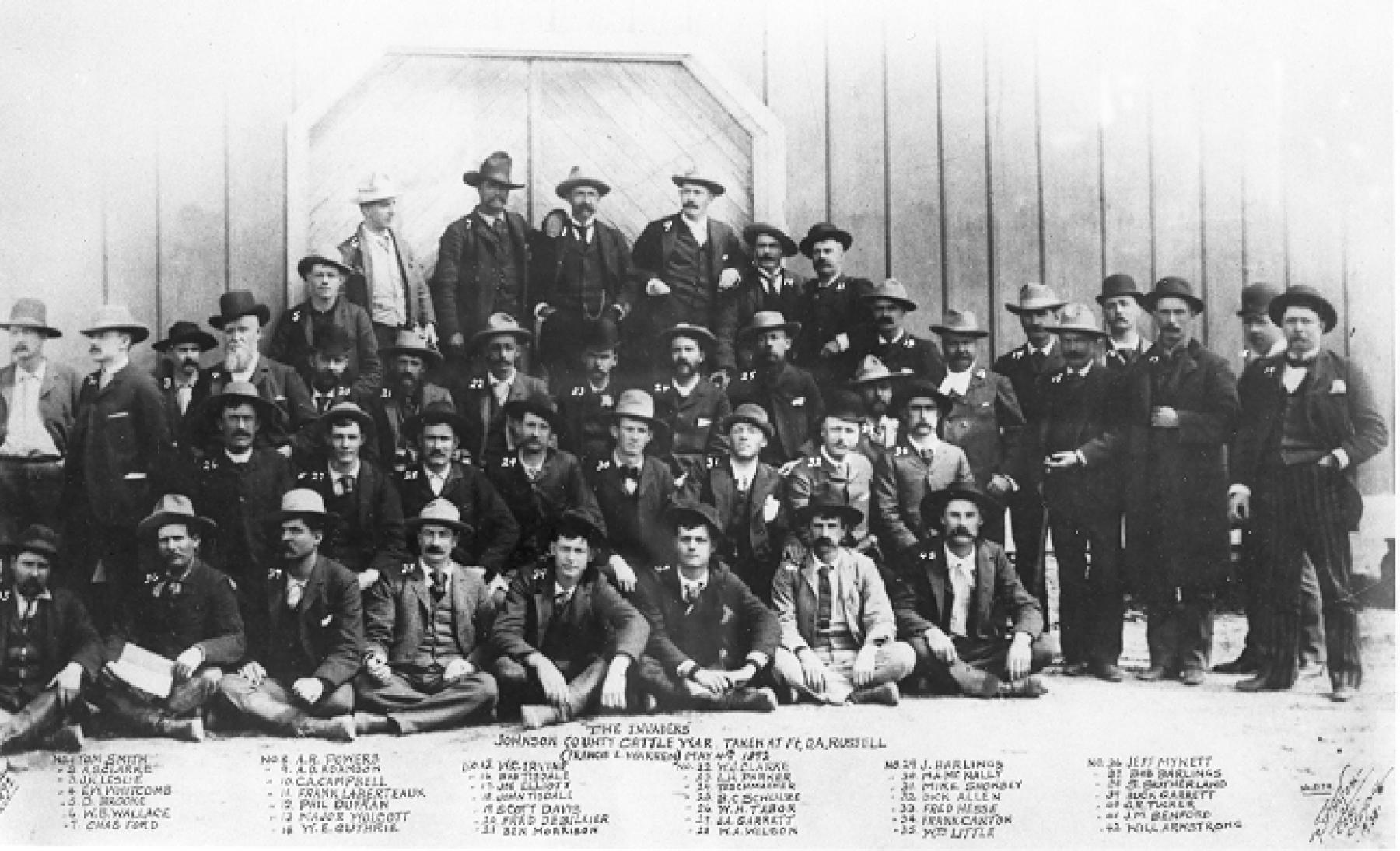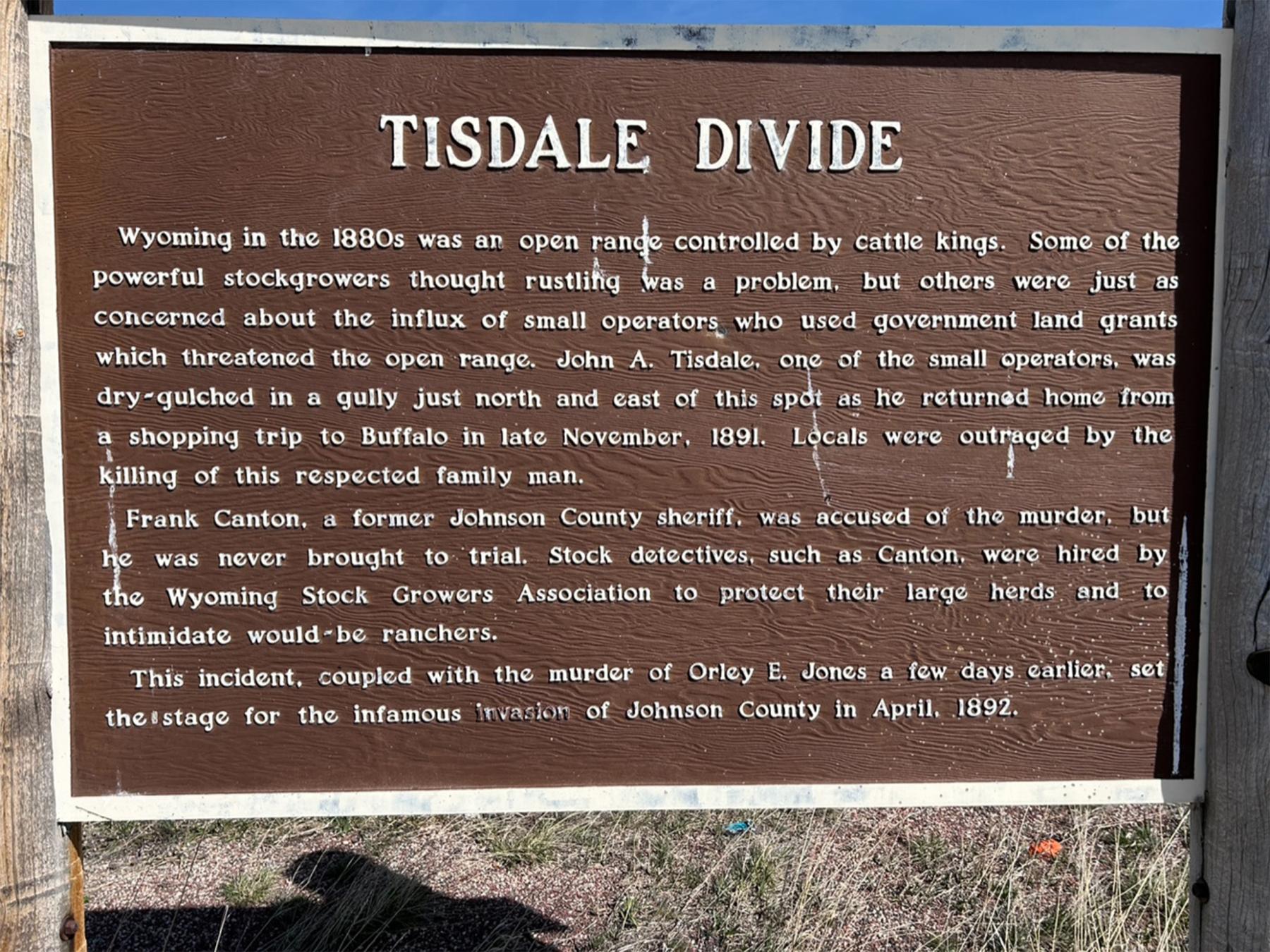- Home
- Encyclopedia
- Outlaw Turned Lawman: Frank Canton In Wyoming 1...
Outlaw Turned Lawman: Frank Canton in Wyoming 1880-1894
The citizens of Buffalo, Wyoming, were shocked the afternoon of Dec. 1, 1891, when news reached town of the murder that morning of John A. Tisdale, a local ranchman. Tisdale, returning to his homestead on the Red Fork of Powder River with a wagonload of groceries and Christmas toys for his children, had spent a couple of days in Buffalo, then a town of about a thousand people. Early that morning as he drove his wagon home, he was shot in the back from ambush. His dog and his two horses were shot, too. The event is often regarded as the opening killing in what became known as the Johnson County War.
Image
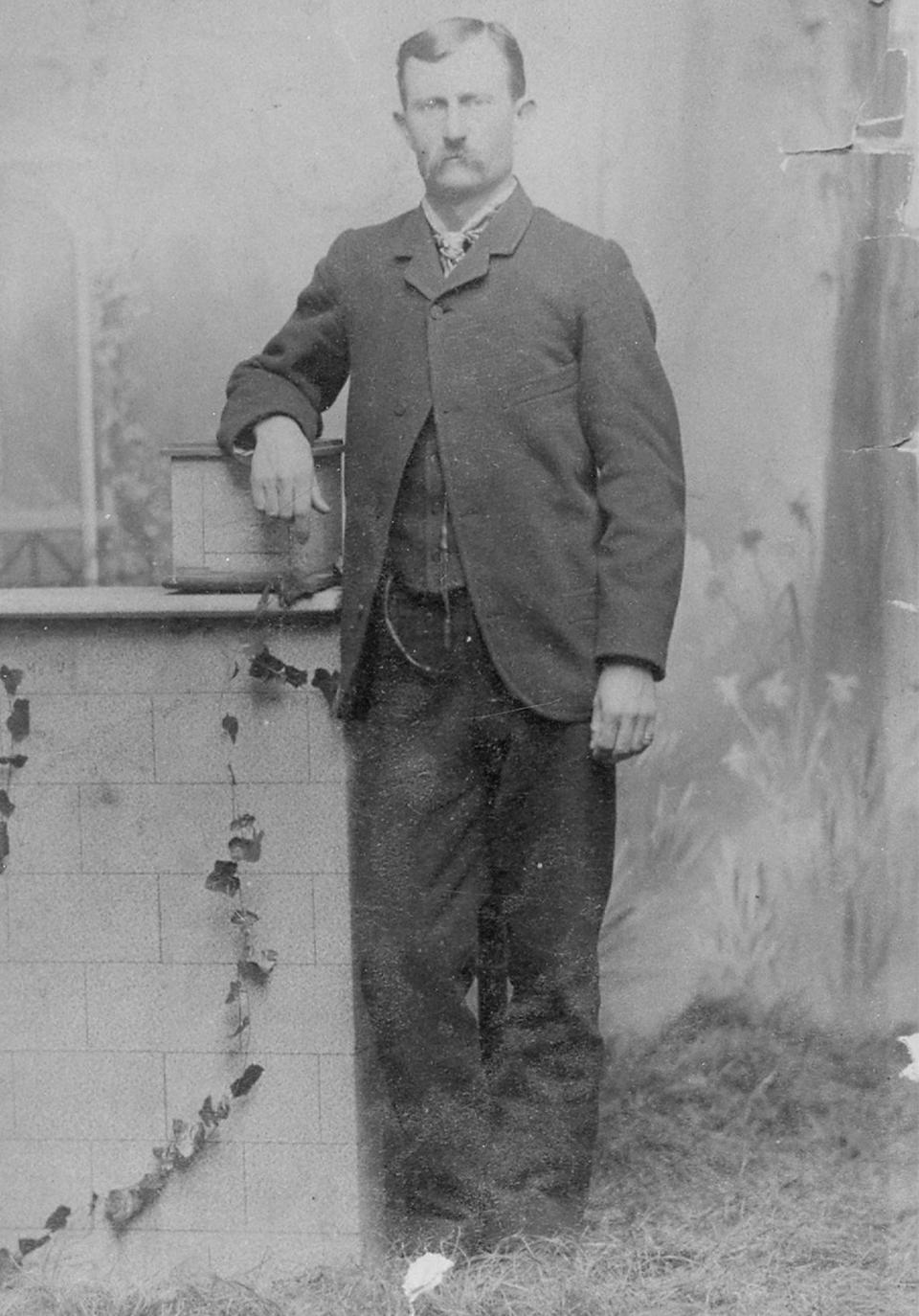
For a week the town was full of rumors and speculation, but talk kept returning to one man as the likely killer: former Johnson County sheriff, Wyoming Stock Growers Association range detective and now range detective for the Wyoming Live Stock Commission, Frank Canton.
Canton had been elected county sheriff in 1882 and again in 1884. He was thorough and effective, a peace officer you did not want to cross, able to intimidate suspects with a look. But by 1886 his popularity was waning due to his harsh tactics and perhaps a growing perception that he was an ally of the big cattle companies. When it became clear that the Stock Growers Association would hire him as range detective for northern Wyoming—a more lucrative position, and one that gave his tactics and talents a freer rein—he chose not to run again.
By this time, Wyoming’s cattle business had boomed, peaked and flattened. Beef prices were dropping, and, with the influx of animals, the ranges were badly overgrazed. A bad drought was followed by a terrible winter. By the summer of 1887, many of the largest ranches, their herds in the thousands or tens of thousands, were beginning to fail. Out-of-work cowboys in increasing numbers took up small, legal land claims and began running their own small herds. The big outfits, faced by difficulties they had largely caused but were unprepared for, came to think of these owners of small herds, especially in northern Wyoming, as rustlers—and some of them were. For various reasons some of the cowboys for the big outfits were rustling too along with hungry Native Americans and wolves.
Meanwhile, the once powerful Wyoming Stock Growers Association was shrinking drastically, along with its finances. They could no longer afford to hire detectives. In 1888, Canton ran again for sheriff of Johnson County. But he failed even to win the Democratic nomination for the post, losing at the Democratic county convention by 24 votes to 7 to the popular saloon and brothel owner Red Angus. Angus easily defeated his Republican opponent the following fall, 509 to 379.
Frank Canton was deeply familiar with how the law and the courts worked. Perhaps partly for his own protection, given the rumors circulating, he boldly turned himself in to Angus a week after the Tisdale killing, insisting there be a hearing to see if there was probable cause that he be charged with murder.
One witness, Charlie Basch, swore he’d seen a man on the road that morning in a coat and hat that looked like Frank Canton’s coat and hat, and riding a horse that looked like Canton’s horse, Fred. But Basch couldn’t be sure the man was Frank Canton. Basch actually gave at least four different versions of his story throughout his life. By contrast, dozens of other people swore they’d seen Canton at various spots around town the morning of the murder. The alibis were ironclad; the prosecutor brought no charges. In fact, the testimony at the hearing may show that Canton made a deliberate walk around town that morning to collect witnesses for an alibi.
Image
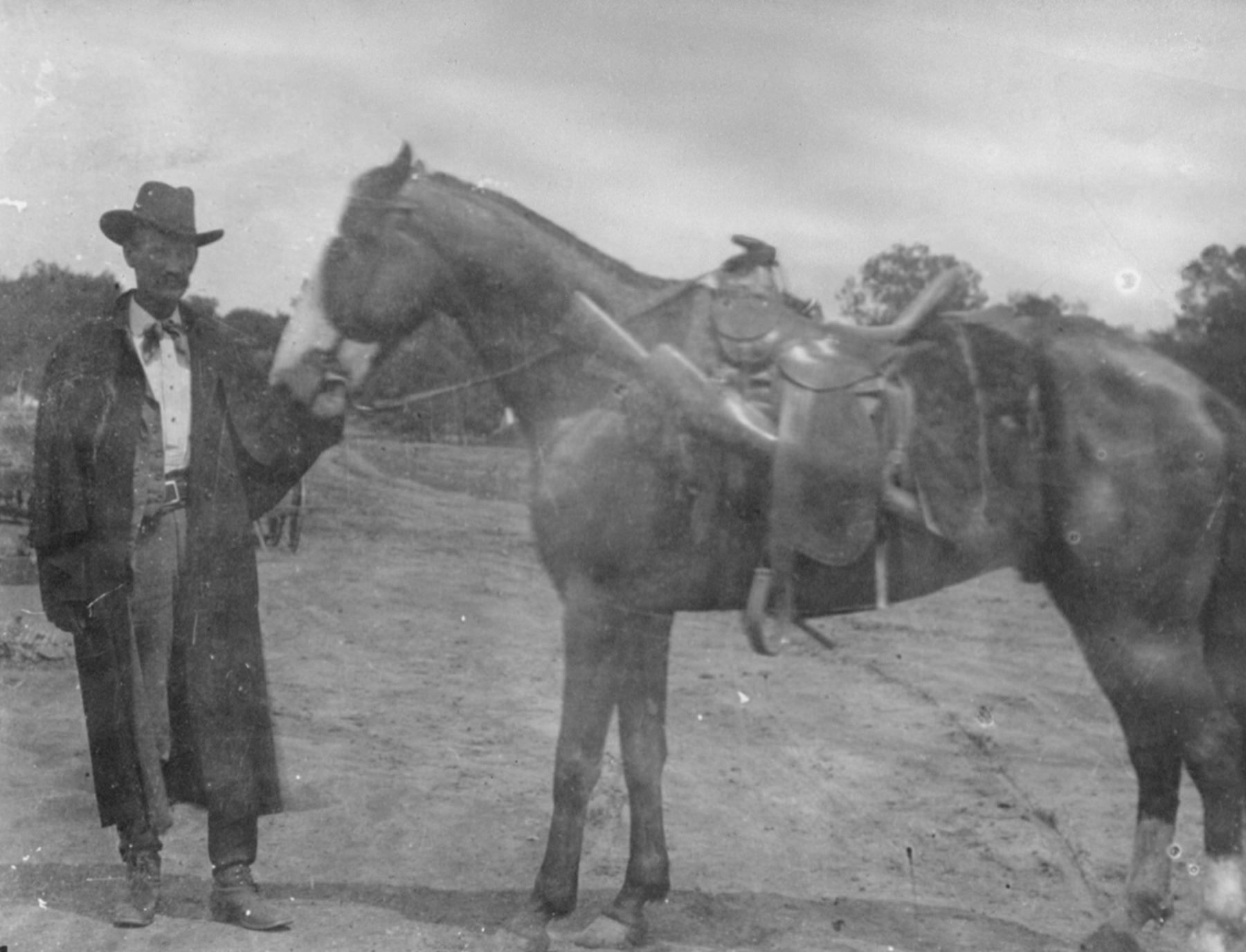
Most historians argue that if Canton didn’t murder Tisdale, he almost certainly knew who did. John Davis, author of Wyoming Range War: The Infamous Invasion of Johnson County, names Canton and three other men as an “assassination squad” working for the Stock Growers Association. They hanged the horse trader Tom Waggoner near Newcastle, Wyoming, in September 1891, and they attacked the former cowboy turned small-ranch owner Nate Champion at a cabin on the Middle Fork of Powder River on November 1.
Champion resisted that attack and shot one of the attackers. Champion soon asked his neighbor John Tisdale to accompany him in a confrontation with NK Ranch Foreman Mike Shonsey, whose horse Champion had seen the morning of the attack and whom Champion believed was in league with the attackers. At the confrontation, Davis believes, Shonsey confessed to Champion and Tisdale the names of the four attackers. That made Tisdale, along with Champion, a potentially strong witness in a case of attempted murder.
And that was why, Davis reasons, the Stock Growers Association felt Tisdale had to be killed. Two other possible motives are that Canton in his former life in Texas had killed an elderly couple—friends of the Tisdales—or that perhaps Tisdale and Canton had a confrontation while Canton was a range detective in Miles City, Montana Territory, and Tisdale was a cowboy for Theodore Roosevelt on his ranch near Medora, Dakota Territory.
Still, there was a lot more to Frank Canton than a lead character of that famous invasion. He was a family man, who had suffered the tragic loss of a child. Canton appeared in Wyoming Territory about 1880, when he was first hired by the Stock Growers. He arrived in Buffalo—a village about two years old—in 1881. Before he came to Wyoming, however, he was a different man, with a different name. He was a hardened Texas outlaw who used his real name, Joe Horner.
Image
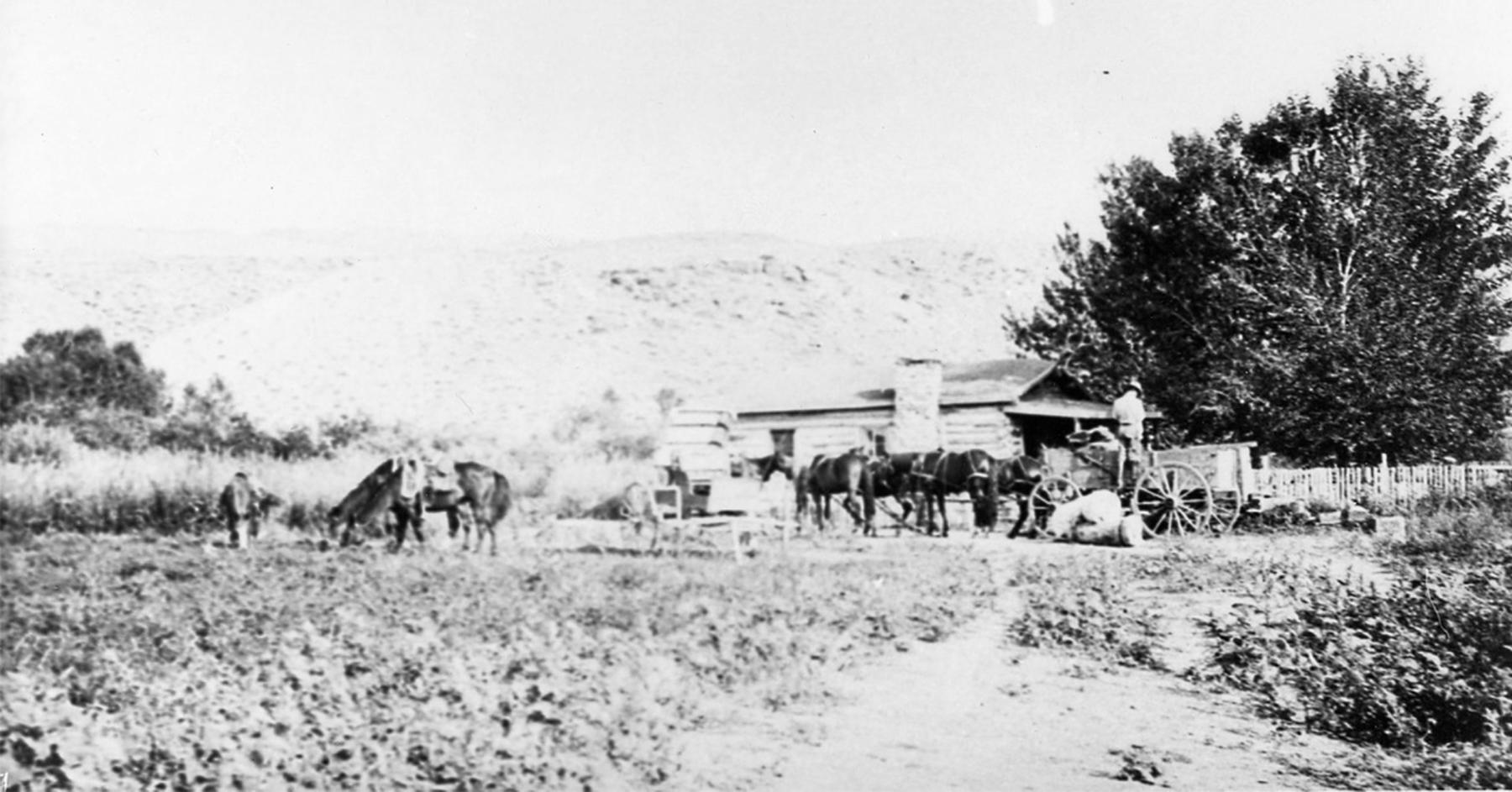
Early life
Canton biographer Robert K. DeArment titled his book Alias Frank Canton, because Frank M. Canton is the name he chose for himself. At birth, his parents named him Josiah “Joe” W. Horner. In his autobiography, Frontier Trails, Canton claims he was born in Virginia in 1849. His parents moved to Denton County in northern Texas, where he grew up in the cowboy way of life. He recalled, “From the time that I was old enough to climb into a saddle, I was riding over the range.”
His first big cattle drive gave him a taste of life on the trail. “I was now a boy of seventeen,” he wrote. “I was eager to join in one of these big cattle drives to the northwest. . . . [W]hen you are on the border, there is a certain lure which draws you on farther and still farther. I suppose it is what Jack London would term the ‘Call of the Wild.’”
Life as a Texas outlaw
As Horner entered manhood, he began hanging out with the wrong crowd of cowboys, including his ranching partner, Bill Cotnam. By 1874, this crowd was known as the Horner-Cotnam gang. That year Horner faced charges of assault and battery, as well as rustling cattle to fulfill his beef contract with Fort Richardson in northeastern Texas. (Companies of the 9th Cavalry and the 24th Infantry—Buffalo Soldiers—were stationed there in the 1870s.) Out on bond, Horner and his gang participated in a bar shootout that ended with one Black soldier wounded, and another recently discharged Black soldier dead.
Horner found himself locked up awaiting trial. After a week in jail, his brothers and gang broke him out, riding out of town and cutting the telegraph line. Then they went on a crime spree, reported in Texas newspapers, with other crimes as well falsely attributed to the Horner Gang. By the time the gang held up a bank in Comanche, there was a lawman on their trail. Horner and his men were arrested in San Antonio when they tried to spend the stolen money. Before being sentenced, Horner managed to escape again. This time he had spent more than a year in jail. After his second escape, Canton continued his life of crime. He and his gang held up a stagecoach but were quickly captured. In a speedy trial in 1877, Horner was sentenced to 10 years in prison, to be served concurrently with the 10 years he faced for the Comanche bank robbery.
In the Huntsville, Texas, penitentiary, Horner plotted his third and final escape from Texas law. He succeeded on August 4, 1879. According to a personal letter Texan Frank Kell wrote to Powder River rancher J. Elmer Brock in 1936, “The rumor is that the Sheriff’s daughter became interested in him and gave him liberty, after which he seems to have gone to your country and adopted the name of Frank M. Canton.”
In 1894, a convincing, calculating Canton talked Texas Governor Jim Hogg into a pardon for the escape from the Texas penitentiary, making it possible for Canton to serve as adjutant general of the Oklahoma National Guard. By that time two of Canton’s sisters had married into an influential Texas cattle and oil family, the Burnetts. This family had been neighbors of the Horners as the children grew, and their son, Burk Burnett, was a lifelong friend of Horner/Canton.
New life on the other side
After a brief stint in Miles City, Montana Territory, as a range detective, Canton tells us, he left there in 1880 and moved to Wyoming. Edward Burnett, a longtime rancher on Crazy Woman Creek south of Buffalo and no apparent relation to the Texas Burnetts, decades later remembered Canton arriving in Buffalo in the early 1880s. Canton “came on” as a drover stocking the ranges for a new firm, Hackney, Holt and Williams. “He was a good hand, he was honest and was what was called a cowman’s man, that is he worked for his employers faithfully,” Burnett remembered.
Struthers Burt, a Princeton graduate who settled in Jackson Hole in 1908, years later described Canton as “a tall, fearless, arrogant fellow, a dead shot, who had a way of making himself very popular with powerful people and extremely unpopular with the less powerful.” Burt’s book, Powder River Let ‘er Buck, describes life in Johnson County during the 1880s and ‘90s. In those years, “[g]hosts armed with six-guns rode the ranges and phantoms followed you along the roads.”
Image
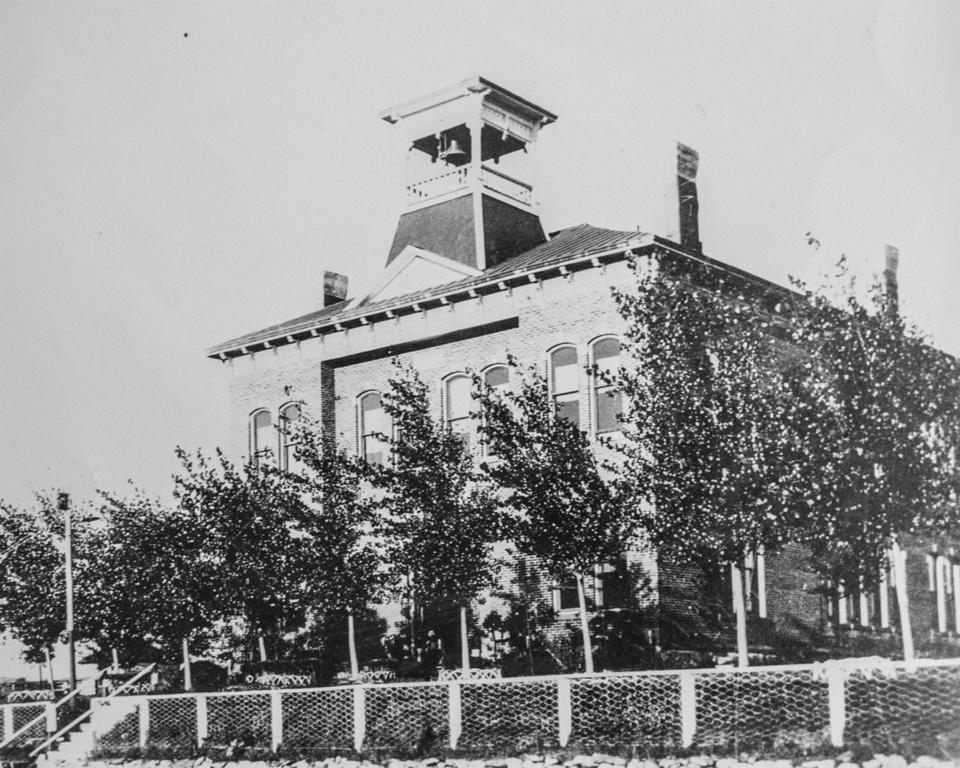
Canton soon was ingratiating himself with the powerful ranching elements in Wyoming. The Wyoming Stock Growers Association (WGSA) hired him as an inspector on August 22, 1881. To also be able to make arrests, Canton received an appointment as a Johnson County deputy sheriff, assisting Sheriff Nat James in Buffalo. The next year he was elected sheriff of Johnson County. Knowledgeable about prison breaks, one of his first actions was to reinforce the Buffalo jail. He served two terms until 1887.
The writer Owen Wister wrote in his journal June 25, 1891, “We passed Mr. Canton, Deputy U.S. Sheriff. Very quiet, very even voice. Does less shooting than any officer in his position, but he is feared by all hands.”
Margaret Brock Hanson wrote that her father, Elmer Brock, claimed Canton had “yellow coyote eyes.” Hanson’s book, Powder River Country, includes Burnett’s story of Johnson County Deputy Sheriff Chris Gross’s tracking and killing of a horse thief on the Bighorn River. “Chris had to kill him,” Burnett recalled. “The horse thief would have given up to Canton without any trouble. It is just the difference in the eye of a man. When Canton got his steely eye on a man that settled it. Canton carried a gun, perhaps sometimes two of them. I never knew of his using one. His eye was sufficient.”
Sheriff Canton
“It (Johnson County) was the best rendezvous for outlaws that I have ever seen,” Canton wrote decades later, “and they were there, plenty of them.” In his 1930 autobiography he recalled problems with road agents. “Hardly a week passed that the stage was not robbed somewhere along” the 450 miles from Rock Creek, Wyoming Territory on the Union Pacific Railroad to Custer Station, Montana Territory on the Northern Pacific. Things were better after Big Nose George Parrot was killed and three members of his gang captured. Canton tells us that he captured the notorious Bill Brown, Parrot’s partner, on “Pinney Creek,” (Piney Creek) north of Buffalo. The Buffalo Bulletin 30 April 1891 notes, “Deputy Marshal Frank Canton not only deserves great credit for the clever capture of the clever rogue but catches about $1,000 in cool cash in the bargain.” Canton claimed he split earnings with his deputies.
Rumors of rustling
By 1884, after Canton’s reelection as sheriff, Johnson County was well-stocked with cattle, horses and rumors of rustlers. Big ranchers in the Wyoming Stock Growers Association accused homesteaders or “settlers” of branding mavericks—unbranded calves that had slipped through the roundups--to start their own herds. Under a brand-new law, mavericks were property of the association, to be distributed in a members-only auction after roundup each spring and fall. This meant that many small ranchers and newcomers who were not members lost cattle to the large, well-established ranchers.
Image
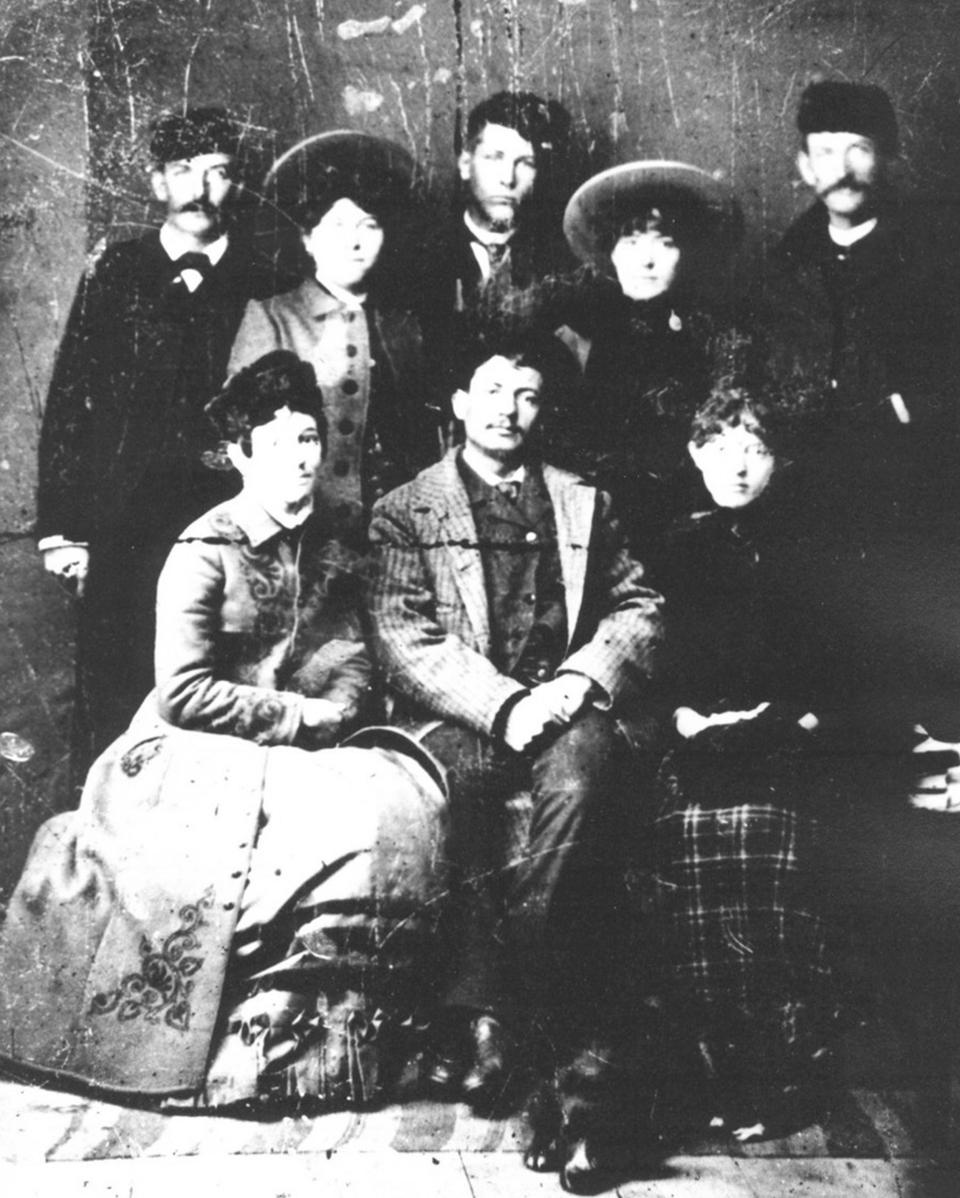
When British-owned outfits began restocking after the bitter 1886-‘87 winter, according to journalist Asa Mercer, they excused their losses to investors by claiming rampant rustling. By this time, tribes, now on reservations, still took hunting trips to the Powder River country. Indian parties started killing cattle to feed their starving families.
Canton wrote that he was able to arrest two Arapaho men he named as Samuel and Beaver, for rustling. These men had left evidence at the scene of the crime—Samuel’s name in a Stetson hat. Mollie, Samuel’s wife, refused to leave his side. Mollie would stay in a back room at the Cantons’ home when she came to hear any word of Samuel and Beaver in the Joliet, Illinois penitentiary, where they were serving time under an Illinois contract with Wyoming Territory.
Family Life
Canton married Annie Wilkerson, a local beauty, in 1885. As a bachelor he had lived for a few months in the cupola of Johnson County’s new courthouse. The newlyweds lived in a tiny log building on the courthouse lawn and with Annie’s parents in their home on South Main Street before building a home on their small ranch twelve miles south of Buffalo. Two baby girls were born to this union, Ruby and Helen.
Once when Mrs. Canton, with the two girls, was driving their team and wagon home from a trip to Buffalo, Mrs. Canton got off the wagon to open the gate and enter a lane leading up to their house. Three-year-old Helen clucked at the team. The horses took off on a trot that quickly accelerated to a mad run with Mrs. Canton hanging on. Her skirt caught in the wagon wheel, dragging her to the ground and behind the wagon before it ripped away, leaving her unconscious.
Two neighbors, George Washabaugh and Charlie Basch—the same Charlie Basch who would later be uncertain about what he saw the morning of the Tisdale murder—hearing the commotion, were able to stop the runaway horses three quarters of a mile past the Canton home. Helen was safe in the wagon, but Ruby had been thrown, fortunately sustaining only minor bruising. Canton, meeting Washabaugh on Washbaugh’s way to get help, “put spurs on his horse.” Arriving shortly and mounting Basch on his own horse, Fred, Canton told him to “annihilate space” to fetch the doctor in Buffalo. The doctor told Canton that Annie would die. But no bones were broken and she “regained possession of her faculties,” Canton later recalled. He would again be told of Annie’s impending death six months later, when she and both girls suffered from diptheria.
Image
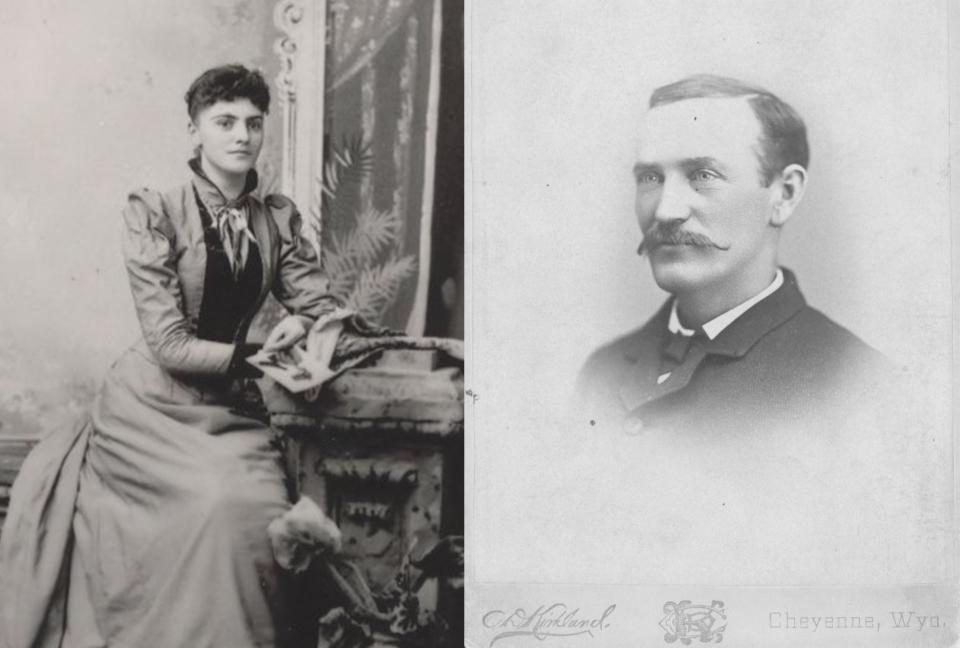
However, Annie outlived them all, and died in 1948. She is buried beside Frank and Ruby in Fairlawn Cemetery, Oklahoma City. Ruby never married and became a librarian in Oklahoma, dying from cancer in 1928 at age 42, a year after her father.
Helen died much earlier at age three, from diphtheria, in Chicago just months after the runaway incident. Canton’s family had contracted the dreadful disease there, where he had sent them in December 1891 to keep them safe during the rustling trouble.
By then, Canton and other members of the Wyoming Stock Growers Association were beginning to plan an invasion of Johnson County.
Growing Conflict
In November 1886, Canton had been appointed a deputy U.S. marshal, and in April 1887, he accepted the job of chief detective for the Wyoming Stock Growers Association.
During these years, Canton, always secretive, seems to have often told newspapers he was sick in order to disguise his real activities. Who would suspect him on a mission for the Stock Growers if a notice in the paper said he was doing poorly?
- Buffalo Bulletin 4 September 1886: “While handling a cayuse yesterday, Sheriff Canton received a kick on one of his knees which has confined him to his room.”
- Big Horn Sentinel 8 September 1888: “Mrs. F.M. Canton and children were reported very ill at Sheridan during the week and Mr. Canton hurriedly took his departure for there.”
- Big Horn Sentinel 19 January 1889: “Mr. Canton still at the home of Wilkerson in Sheridan with a severe attack of inflammatory rheumatism. It will doubtless be some time before he will be able to be out.”
- Buffalo Bulletin 20 August 1891: “Frank Canton is quite seriously ill at Mr. Wilkerson’s. It is Frank’s old enemy the rheumatism, which has him in its grip.”
By the late 1880s, Canton later explained, “The thieves were arrested and brought into court, but it was almost impossible to convict a rustler. The jury was summoned from the body of citizens of the county and friends and sympathizers. They would turn the defendants loose as fast as we arrested them.”
But historian John Davis disputes this claim. Davis’s research shows that the acquittals of the five rustling cases brought to the Johnson County court in 1889 were largely due to the deeply flawed nature of the cases, and that the cases seemed to be motivated by a desire to punish small ranchers for grazing on public land.
Image
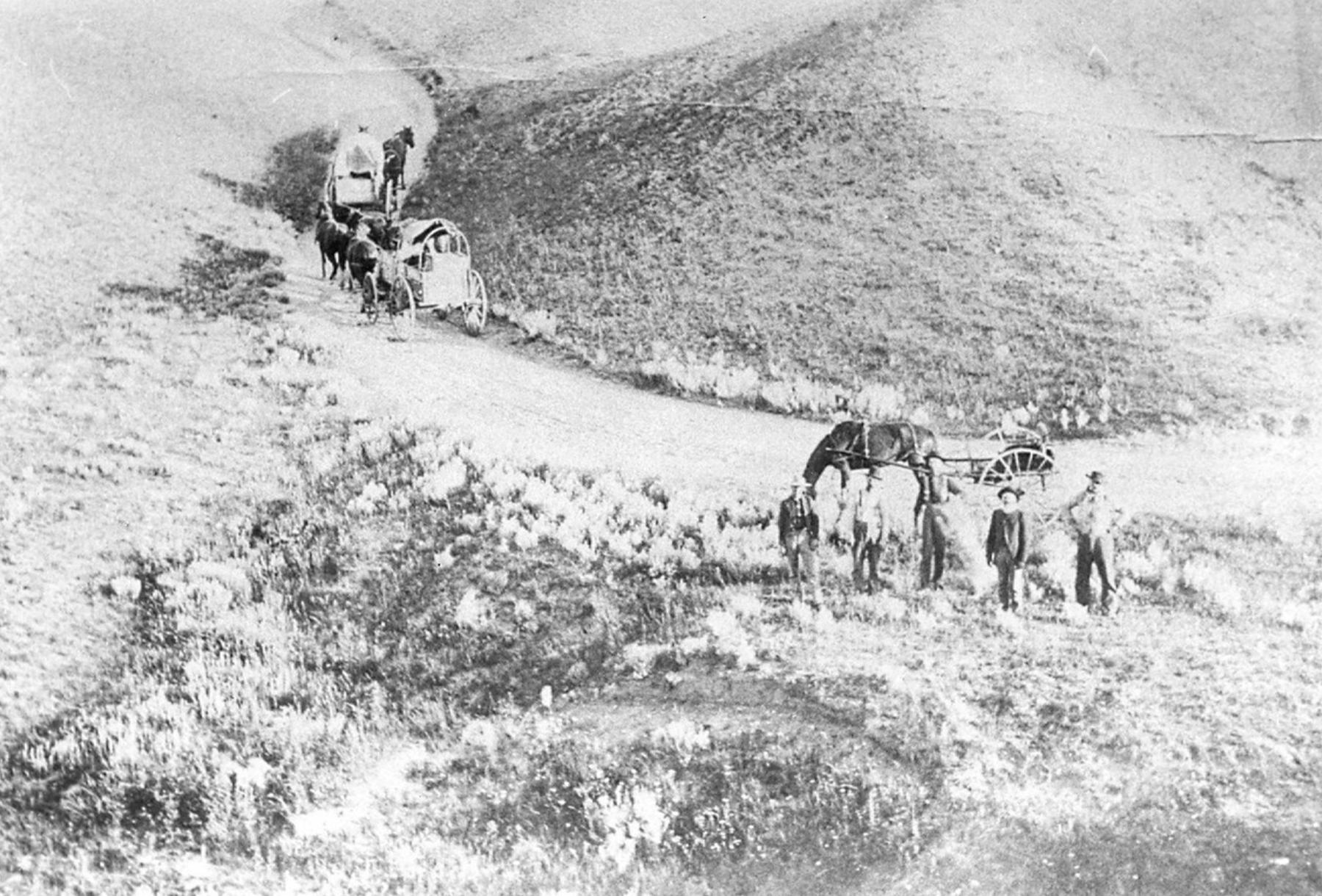
Suspected of Murder
In December 1891 before the April invasion of Johnson County, Canton became the prime suspect in the murders of two men—John A. Tisdale and Orley “Ranger” Jones. Both men were potential witnesses in the Stock Gowers’ attempt to assassinate Nate Champion and another small rancher. Jones and Tisdale were shot in the back, days apart, on their paths home from Buffalo on November 28, and December 1, 1891. But Charlie Basch, as we have seen, was uncertain in his testimony about the Tisdale murder and Canton was able to establish a sound alibi. No one was ever charged in the Jones murder.
John Burroughs, author of the Stock Growers Association-sponsored Guardians of the Grassland, notes Association Secretary Thomas B. Adams’s contention that Canton “is conceded to be second to none in ability, courage and experience.” Canton was also clever, sly and calculating.
With Basch’s testimony so weak and Canton’s alibi so strong, historians continue to speculate over the likely murderer or murderers of Tisdale and Jones. John Davis makes a case that Joe Eliott, one of the four stock detectives who attacked Champion, was involved in one or both of the killings.
Canton biographer Robert DeArment makes a more surprising claim—that it was Tom Horn. The notorious Pinkerton detective and hired assassin for big ranchers would eventually be convicted of a murder north of Cheyenne and hanged in 1903. At this time he was not nearly so well known, but Horn, using the alias Tom Hale, was in Wyoming in the spring of 1892, deputized as a U.S. marshal to investigate the post-Invasion murder of Hoe Ranch Foreman George Wellman, and may have been in the area earlier. One of several of Basch’s accounts, this one from the 1930s, says he saw Horn as well as Canton near the site of the Tisdale murder.
Someone waited for Tisdale and Jones, surprised them, and shot them in the back. This ambush tactic, De Arment notes, convincingly to me, was a trademark of Horn, not Canton. Canton’s tactics tended more toward early morning attacks, including the two against Nate Champion.
And the Helvey papers in the American Heritage Center at the University of Wyoming include an account from Roy Munkres, eighteen years old at the time of these murders. Munkres, claimed Dr. John Howard Lott provided a fresh horse for Tom Horn to ride to the Gillette train station.
The Invasion
During the early hours of April 5, 1892, 52 men rode a private train north from Cheyenne to shoot or hang a list of 70 men carried by Frank Canton. Early on, tension arose between Canton and rancher Frank Wolcott, one of the expedition’s two leaders.
In The War on Powder River, Helena Huntington Smith, offers a brief peek at these men’s egos, “The train was to go as far as Casper, a hundred and fifty miles northwest of Cheyenne, then the party would proceed overland on horseback. As it jolted on its sleepless way that night dissension broke out. Major Wolcott was at work stowing gear in the baggage car when Frank Canton came in and the peppery major ordered him out. Whatever one may think of Frank Canton, he was not a man to be ordered around.”
Image
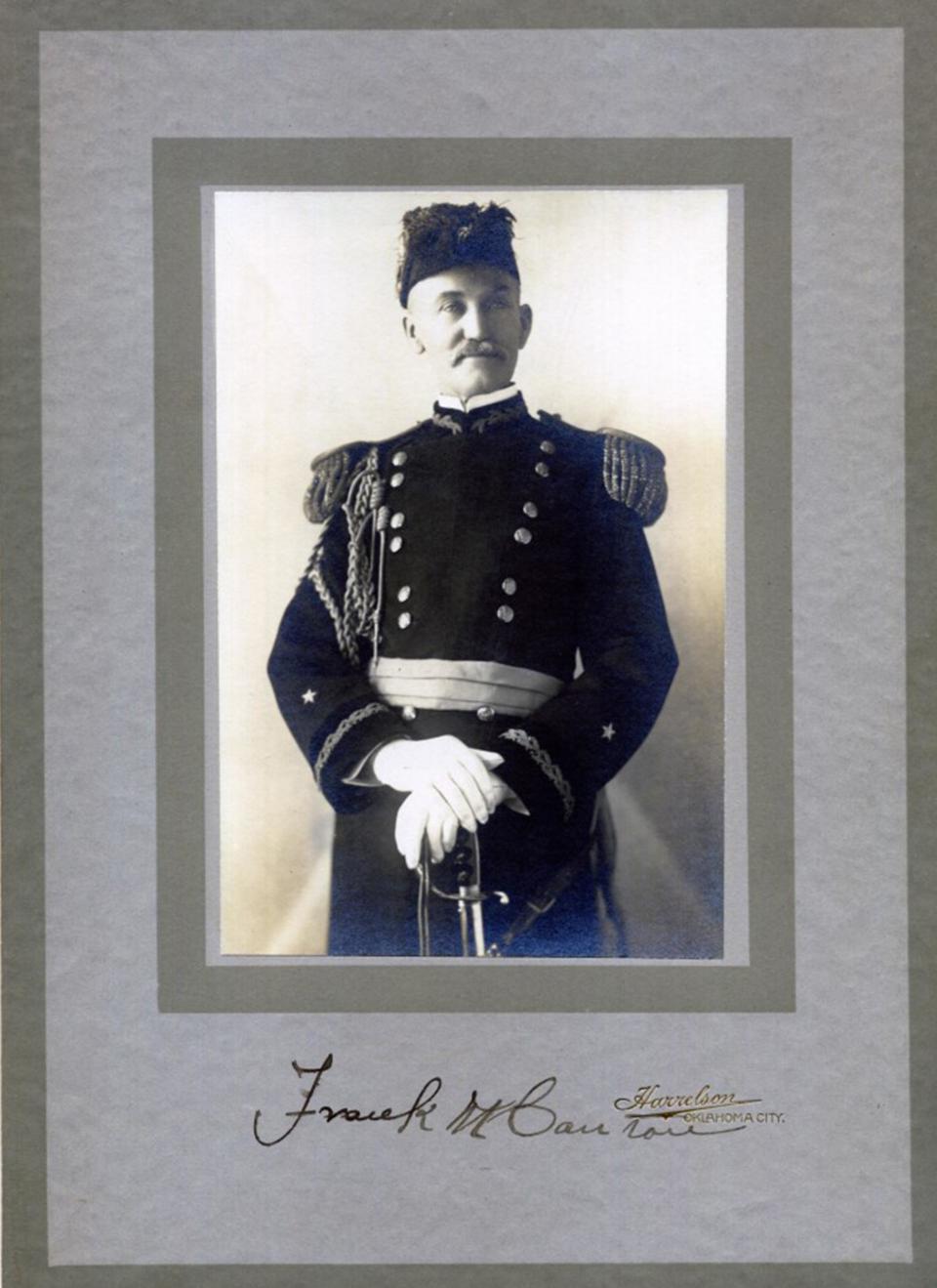
Following the fatal attack on Nate Champion and Nick Ray at the KC Ranch, word got out that the Invasion was underway. The group was forced to take refuge at the TA Ranch south of Buffalo. (Canton’s ranch was on their route, but, according to Herb Eder in Big Horn Mountain Odyssey, “because he had not been there since December, they did not know the shape it was in.”)
The invaders survived a three-day siege by a posse that grew to 400 Johnson County citizens. Posse members were approaching the TA ranch house with a rolling log fort and dynamite when cavalry appeared from Fort McKinney, near Buffalo, and lifted the siege. Acting Governor Amos Barber, sympathetic to the Invasion, allowed state officials to assume control over the 50 invaders and frustrated all efforts by Johnson County prosecutors to build a case. Still, Johnson County had to bear the cost of feeding and housing them. After eight months, all charges against the invaders were dismissed as Johnson County didn’t have the funds to continue prosecution.
Two years later, newspaperman Asa Mercer published The Banditti of the Plains, calling the Invasion in his subtitle, “The Crowning Infamy of the Ages.” Mercer included names of all of the invaders and noted as well that the Johnson County citizens involved in the siege at the TA Ranch “claimed there was only four men in the employ of the stock association for the purpose of killing off the rustlers; they claimed these four men were Frank Canton, Tom Smith, Joe Elliott and Fred Coates.”
Canton, unsurprisingly, denied it. “It is needless for me to state that what I shall write in this life story will be the plain, uncolored truth,” he declares Frontier Trails. “It will contain no fiction. I do not feel that it is necessary to draw on the creative imagination of the novelist to make a story of this character more interesting; besides, no writer of fiction could think of the plots that a country full of outlaws would invent for the man that was chasing them; neither could he think of and describe the many kinds of narrow escapes and thrilling adventures that would happen to the sheriff.”
After the cattle war Canton and his family moved to Oklahoma. He also served as a peace officer in the Yukon in Alaska and eventually became adjutant general of the National Guard of the newly formed state of Oklahoma. But the Invasion, as Johnson County locals prefer to call it, was a fiasco from the start. It proved to be the end of Frank Canton’s time in Wyoming although he, Annie and Ruby would continue to visit family in Buffalo throughout the years.
[Editors’ note: Special thanks to the Wyoming Cultural Trust Fund for support which in part made publication of this article possible.]
Resources
Bibliography
- Buffalo Bulletin, Big Horn Sentinel. newspaper articles cited as used.
- Burnett, Edward. “Frank Canton, The Sheriff” manuscript copy from Fort Phil Kearny Association archived at Johnson County Library, Buffalo, Wyo.
- Burroughs, John Rolfe. Guardian of the Grasslands, The First Hundred Years of the Wyoming Stock Growers Association, 129. Cheyenne: Pioneer Printing & Stationery Co., 1971.
- Burt, Struthers. Powder River Let ‘er Buck, 285-309. New York Toronto: Rinehart & Company, Inc., 1938.
- Canton, Annie M. Personal letter of correspondence to J. Elmer Brock, ownership Margaret Brock Hanson estate, copy archived at Johnson County Library, Buffalo, Wyo.
- Canton, Frank. Frontier Trails The Autobiography of Frank M. Canton. edited by Edward Everett Dale, 27-74, Norman: University of Oklahoma Press, 1966.
- Davis, John W. Wyoming Range War The Infamous Invasion of Johnson County. University of Oklahoma Press, 2010.
- Davis, John W. “The Johnson County War: 1892 Invasion of Northern Wyoming” WyoHistory.org, accessed April 8, 2024 at https://www.wyohistory.org/encyclopedia/johnson-county-war-1892-invasion-northern-wyoming
- DeArment, Robert K. Alias Frank Canton 10, 49-144. Norman and London: University of Oklahoma Press, 1996.
- Eder, Herb. Big Horn Mountain Odyssey A History of the Big Horn Mountain Region, 130. Herbert R. Eder and The Office, Buffalo, Wyo., 1989.
- Gorzalka, Ann. Wyoming’s Territorial Sheriffs, 229-241. Glendo, Wyo.: High Plains Press, 1998.
- Hanson, Margaret Brock, Powder River Country: The Papers of J. Elmer Brock, 223-234, Frontier Printing, Inc, 1981
- Helvey, Robert T. Papers, collection Roy Munkres interview, American Heritage Center, University of Wyoming, Accession number 1465 OCLC Number: 27965106, library catalog
- Kell, Frank, President The TEX-(B)FX Cattle Company Wichita Falls, Texas, Personal letter to J. Elmer Brock, Sept 10, 1936, copy of letter in Johnson County Library Archives
- Mercer, A.S. The Banditti of the Plains, 194. Norman: University of Oklahoma Press, 1954.
- Miller, Grayce. “Frank Canton Most Colorful and Feared of All Wyoming Sheriffs.” Buffalo Bulletin 2 August 1958.
- Smith, Helena Huntington, The War on Powder River The History of an Insurrection, 197, University of Nebraska Press, 1966.
- Wister, Fanny Kemble, editor. Owen Wister Out West His Journals and Letters, 115. University of Chicago Press, 1958.
Illustrations
- The photo of Frank Canton and his horse is negative number 275A at the American Heritage Center, University of Wyoming. Used with permission and thanks.
- The portrait of Frank Canton in his adjutant general’s uniform is from the Oklahoma Historical Society. Used with thanks.
- The photo of the Johnson County invaders is from Wikipedia. Used with thanks.
- All the other photos are from the collections at the Johnson County Library, Buffalo, Wyoming, used with permission and with special thanks to the library and to the author.

